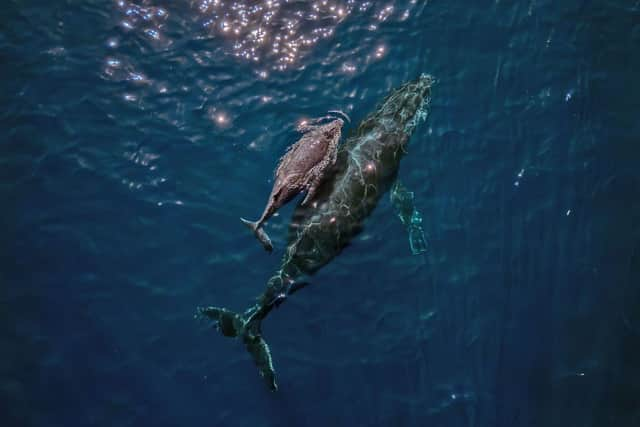United Nations: Nearly half of all the world's migratory animals are falling in numbers - new report finds
and live on Freeview channel 276
A new United Nations report has found nearly half of the birds, fish, and mammals which traverse the world's skies and seas are facing an uncertain future.
But it has also highlighted stories of hope, that show with real, coordinated conservation efforts, we can help pull entire species back from the brink.
Advertisement
Hide AdAdvertisement
Hide AdEvery year, billions of animals take part in migrations, travelling great distances - often across borders - to feed, find mates, or raise young. But a landmark new study, the first-ever State of the World’s Migratory Species report, found that 44% of all migrating animal species protected under a key UN biodiversity treaty - the Convention on the Conservation of Migratory Species of Wild Animals (CMS) - are experiencing population decline.
More than one in five (22%) of the 1,189 species listed are already facing extinction, it warned, with marine life particularly hard-hit. Almost all fish species on the list (97%), including sharks and rays, were at imminent risk of dying out forever. On top of all of this, just over half of the key land recognised by the report as being important to migrating species was not protected.


The report listed two main threats to all migratory animals; overexploitation (including both intentional hunting and fishing, and ending up as accidental bycatch), and habitat loss due to human activity. Pollution, invasive species, and climate change were all having profound impacts on migratory species too, with the world just experiencing its hottest year on record.
Inger Andersen, the UN's under-secretary-general and executive director of its environment programme, said: “Today’s report sets out the evidence that unsustainable human activities are jeopardizing the future of migratory species – creatures who not only act as indicators of environmental change but play an integral role in maintaining the function and resilience of our planet’s complex ecosystems."
Advertisement
Hide AdAdvertisement
Hide AdBut she said that the global community had an opportunity to translate this latest science of the pressures facing migratory species into concrete conservation action. "Given the precarious situation of many of these animals, we cannot afford to delay, and must work together to make the recommendations a reality.”
Migratory species play many important roles which help maintain the world’s ecosystems. They help pollinate plants, transport key nutrients across huge areas, prey on pests, and even help to store carbon. The UN said the report was a "clear wake-up call" that world leaders needed to take action.
CMS executive secretary Amy Fraenkel added: “Migratory species rely on a variety of specific habitats at different times in their lifecycles. They regularly travel, sometimes thousands of miles, to reach these places. They face enormous challenges and threats along the way, as well at their destinations where they breed or feed.
Many also crossed national borders, she said, and their survival depended on the efforts of all countries in which they are found. "This landmark report will help underpin much-needed policy actions to ensure that migratory species continue to thrive around the world.”
Advertisement
Hide AdAdvertisement
Hide AdThe study made a set of urgent recommendations, including strengthening and expanding efforts to tackle illegal and unsustainable hunting and fishing of migratory species; urgently taking action to protect the species in most danger of extinction - especially fish; identifying and protecting important sites for migrating animals across the globe; and scaling up efforts to tackle climate change. Experts were also considering expanding the CMS to include more at-risk migratory species in need of desperate international attention.
Amid the report's concerns for species like the Egyptian vulture and wild camel, which have become much more endangered over recent decades, there were stories of hope - and proof that local to international action can lead to species-wide recoveries. Fourteen species that now have an improved conservation status on 30 years ago, including both blue and humpback whales, the white-tailed sea eagle and the black-faced spoonbill.
Meanwhile, coordinated local action has seen illegal bird netting reduced by 91% in Cyprus - while hugely successful integrated conservation and restoration work in Kazakhstan has brought the Saiga Antelope back from the brink of extinction.
Comment Guidelines
National World encourages reader discussion on our stories. User feedback, insights and back-and-forth exchanges add a rich layer of context to reporting. Please review our Community Guidelines before commenting.
